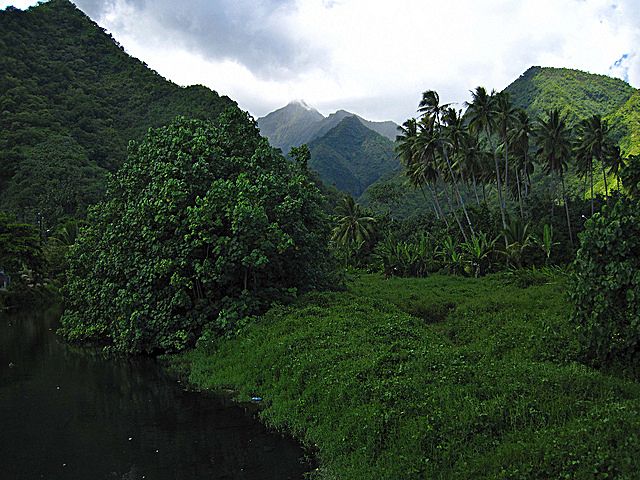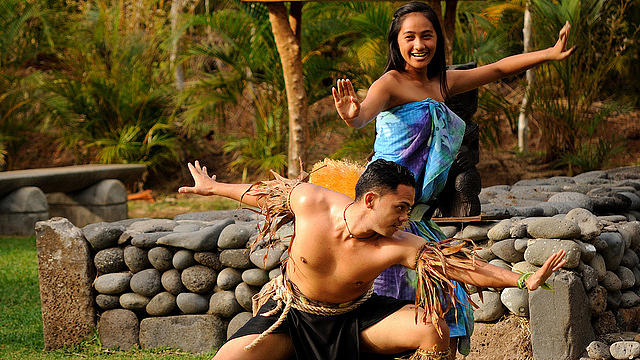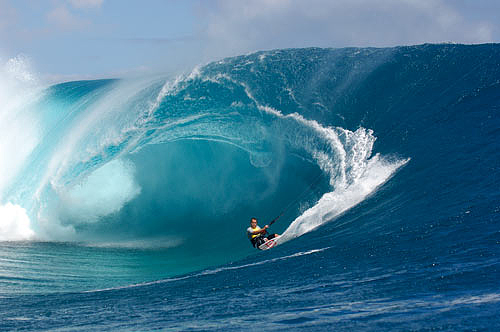Charles Ariitetoa Rochette, a 54-year old Tahitian man, became an orero, a public speaker, so he could help preserve and transmit the culture of his society. La Dépêche de Tahiti, a prominent daily newspaper in French Polynesia, published a story about him last Wednesday.

Mr. Rochette gained his knowledge and aptitude for transmitting Tahitian legends and stories from his father, who was also an orero in several communities of Tahiti Iti, the smaller southeastern section of the island. According to one website, the position of orero used to be reserved only for a small number of hereditary initiates, but the tradition is experiencing a resurgence of popularity. The orero—a public speaker or orator—popularizes social and cultural activities through his speaking and performing.
The newspaper article last week gave numerous examples of the kinds of things the orero does. He regularly performs at local events, particularly those that include students and children; he participates in the opening ceremonies of sporting events; he welcomes students visiting a book fair and introduces them to his art; he tries to preserve the oral histories, legends, and folk songs of Tahitian communities through his work. Mr. Rochette represents a living memory of Tahitian history and culture.
But in addition to his preservation of oral histories, he follows the examples of his father and before him his grandfather by writing legends into a book. He told the reporter that simply telling and retelling the old stories is not enough—the orero must write them down. His grandfather wrote a book of legends and passed it along to his dad, who also wrote his book to pass along to Charles. His father urged him to someday write a book too, which he is now doing in order to preserve Tahitian traditions. A publishing house has expressed interest.

Whether performing, telling stories, or writing, an orero such as Mr. Rochette plays a vital role in preserving the cultural traditions, histories, genealogies, and geographies of communities. His own 12-year old son has already warned him that one day he will take up the family torch. Mr. Rochette hopes that a fourth volume of ancestral legends will someday be written.
The article in La Dépêche de Tahiti included a retelling of one of Mr. Rochette’s favorite legends, a myth about the community of Teahupo’o, located on the southwest coast of Tahiti Iti where he launched his career as an orero. Teahupo’o is famous among surfers for its spectacular waves. One day, according to the story, the twins Hinapu’u and Maraeono, the first men to surf the waves at Teahupo’o, organized a sporting competition. The initial events included hurling javelins and throwing stones with slings.

The third competition consisted of confronting the monster wave, named “Taravao-nui-i-te-vaha-‘oro’oro.” Everyone gathered near the shore at a spot that today is called Fare Mahora Point to watch the surfers compete. The winner then became a hero. Everyone praised the twins for instituting the surfing competition, but they called out warnings to be careful of the dangers. The giant wave does not discriminate—she can destroy anyone who challenges her. Only tenacity and strength will overcome her. Or at least, that’s the story that Charles Ariitetoa Rochette tells.